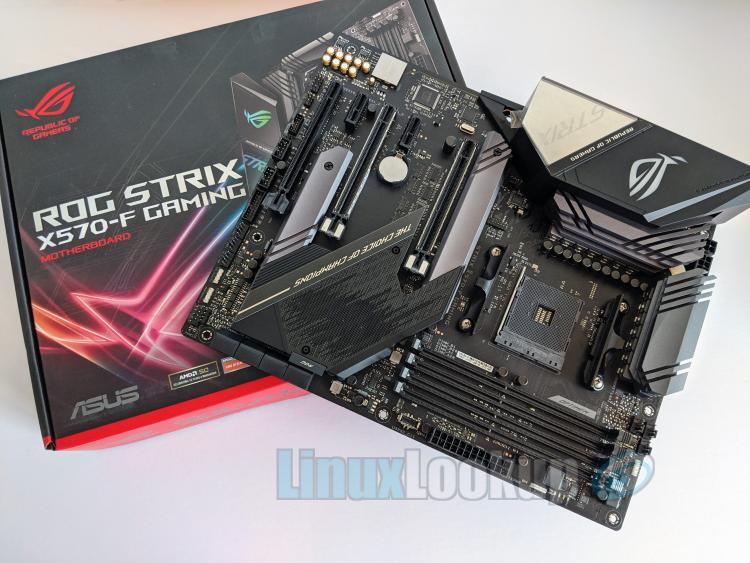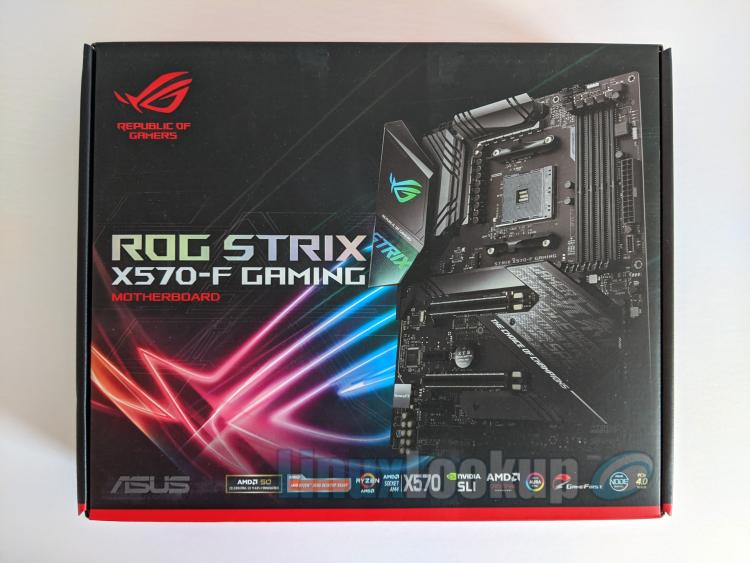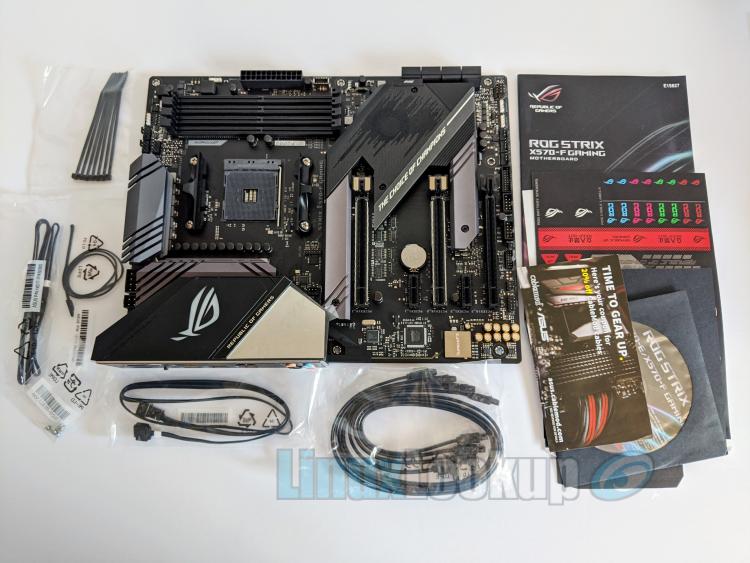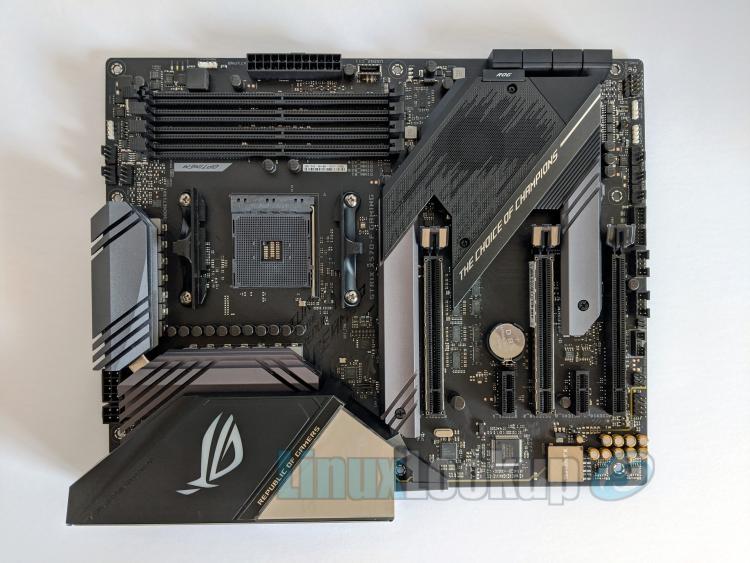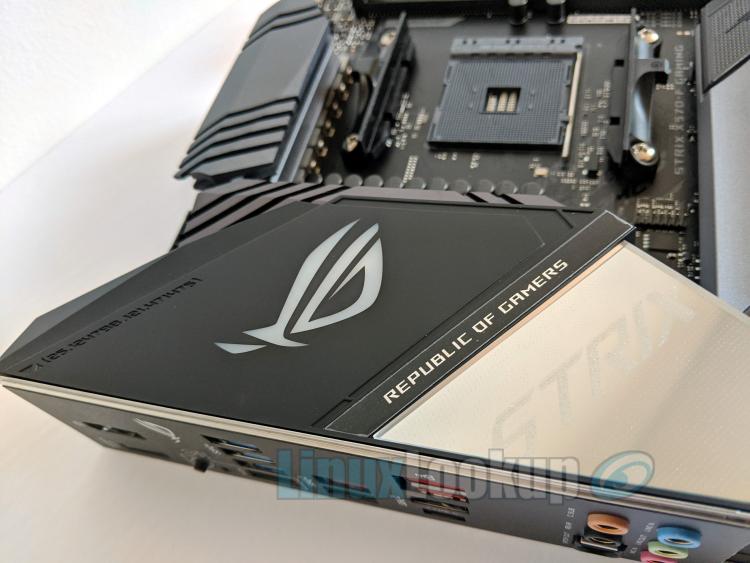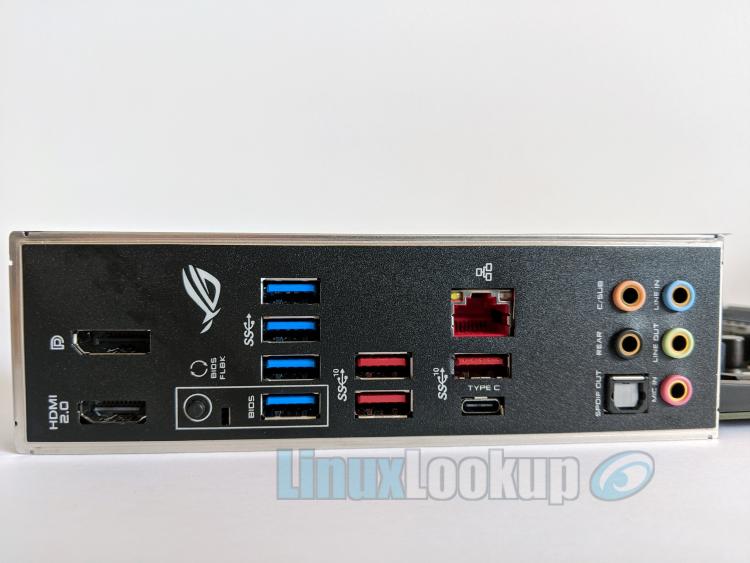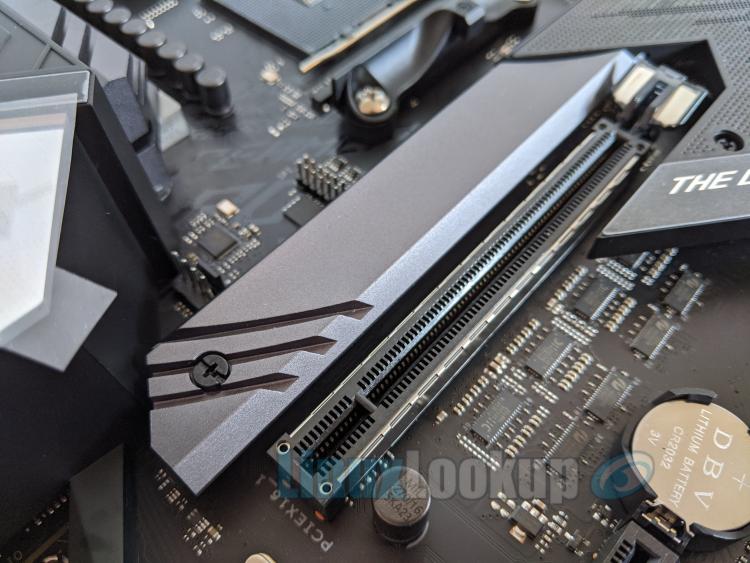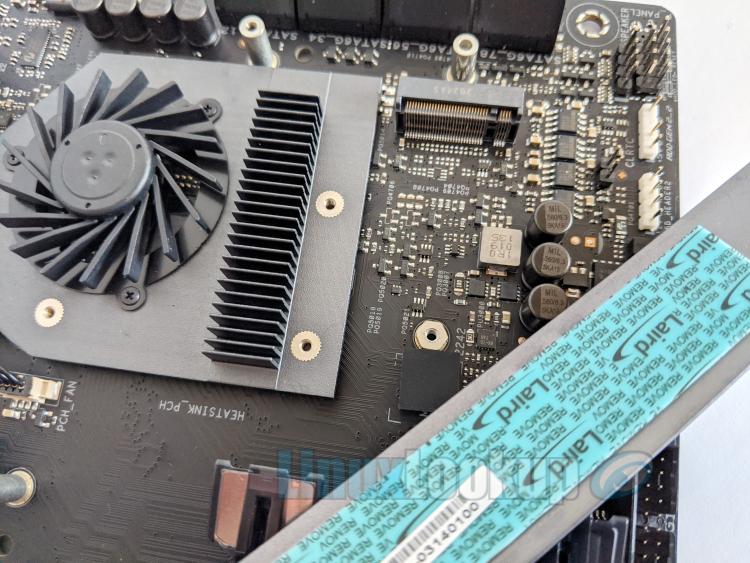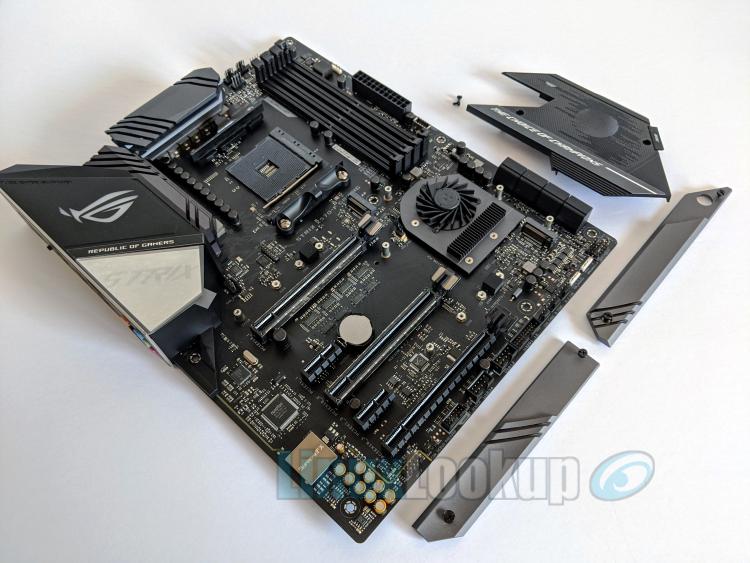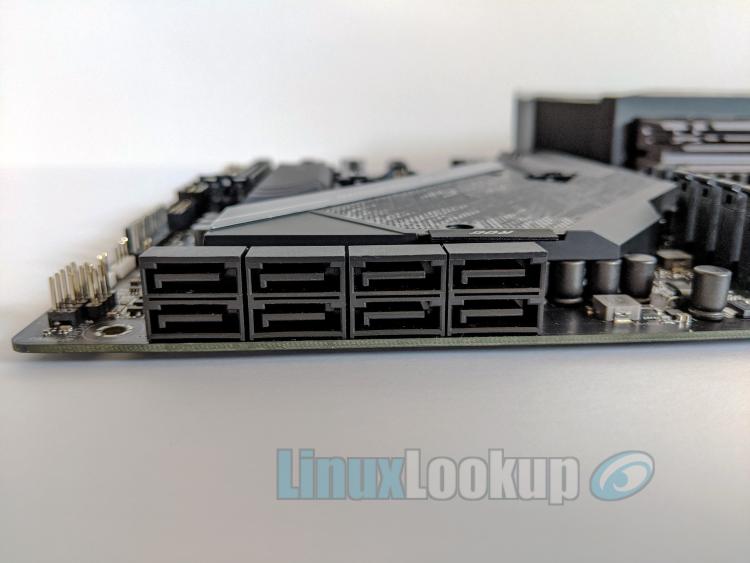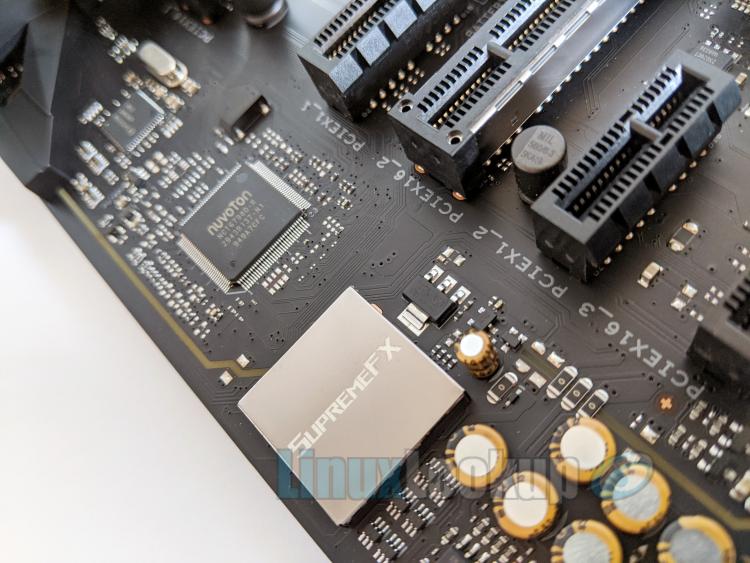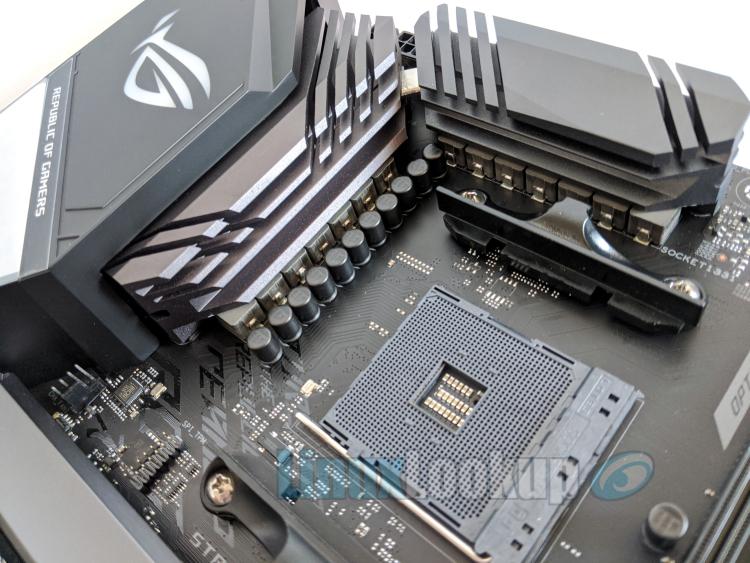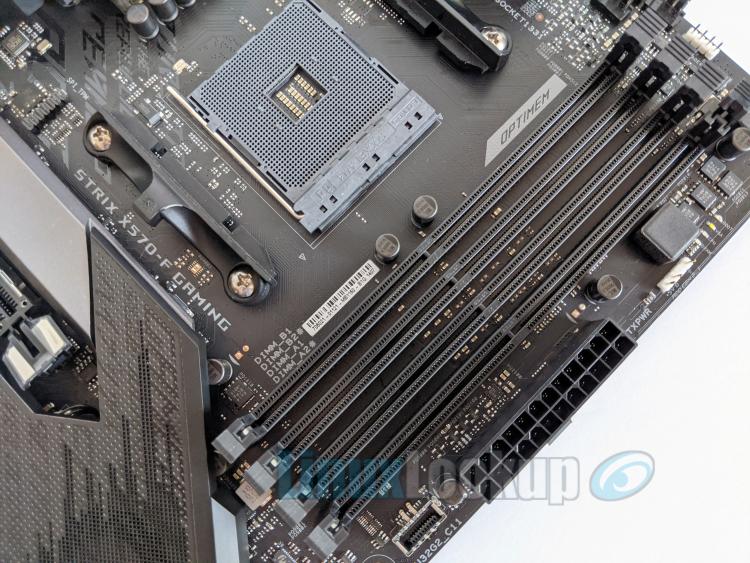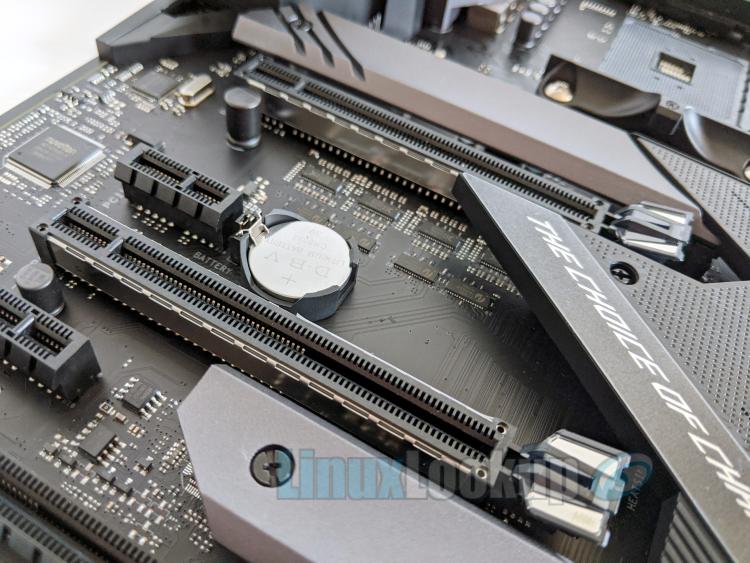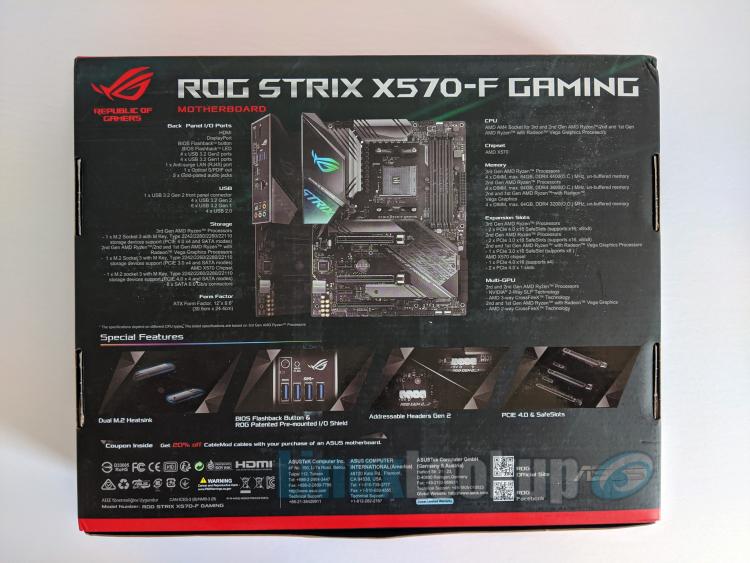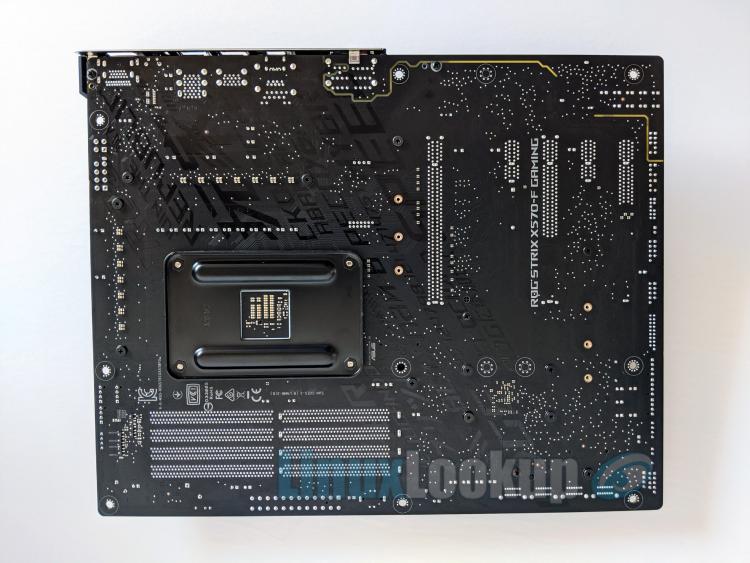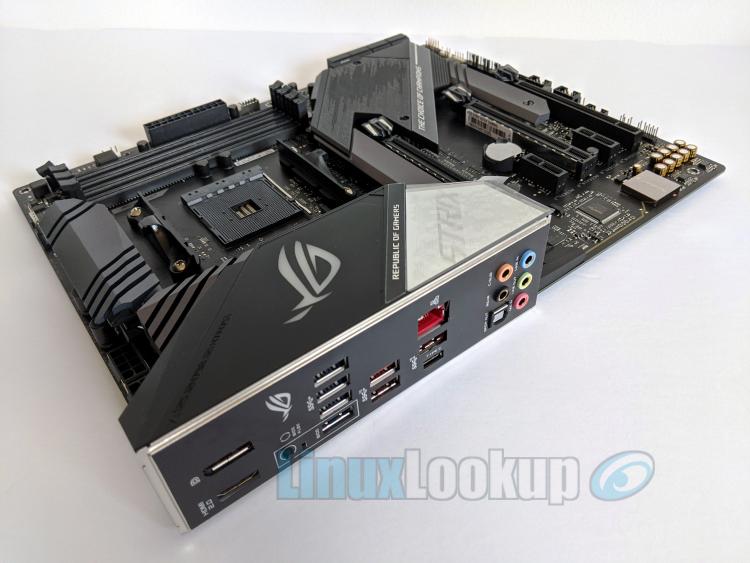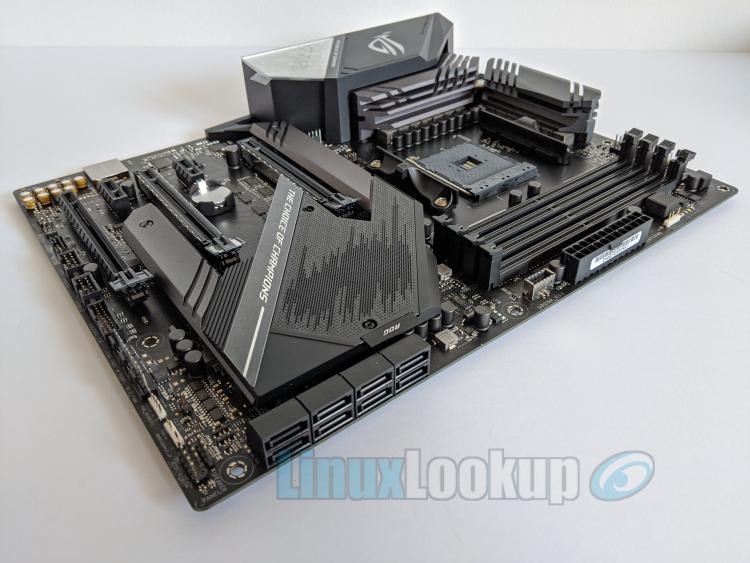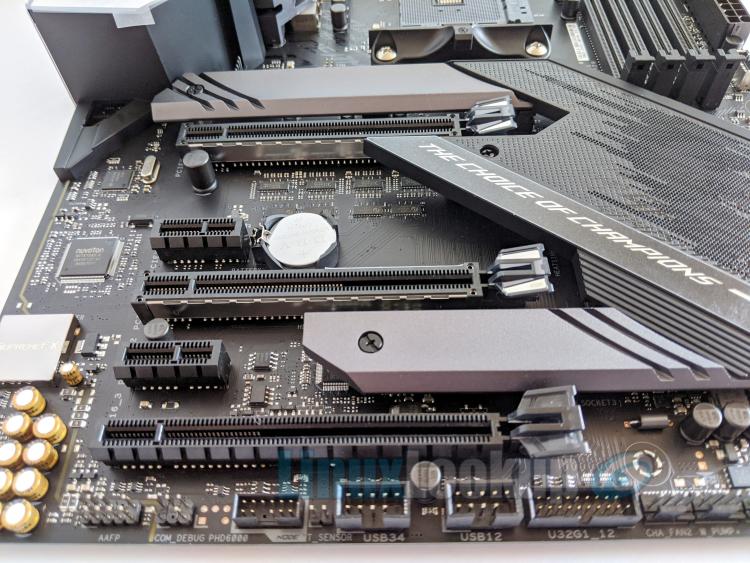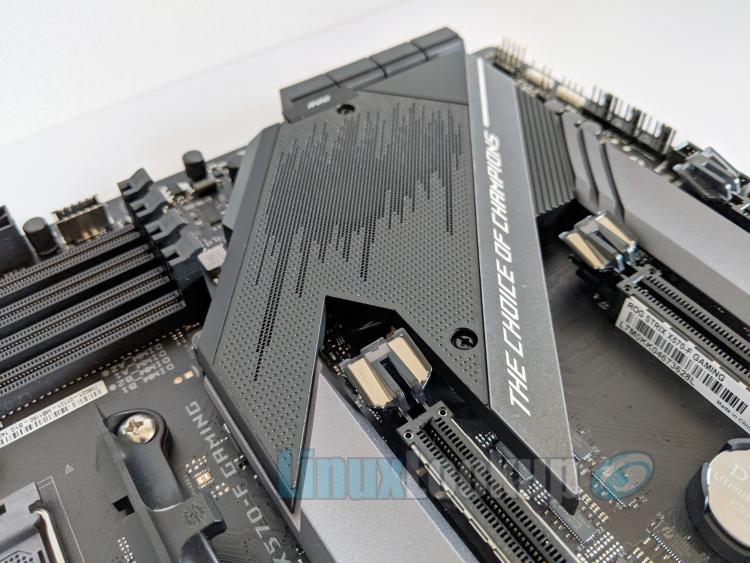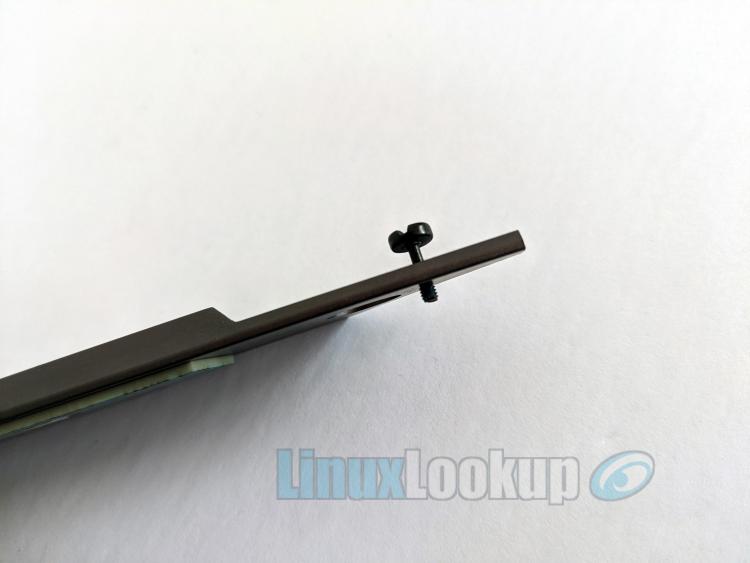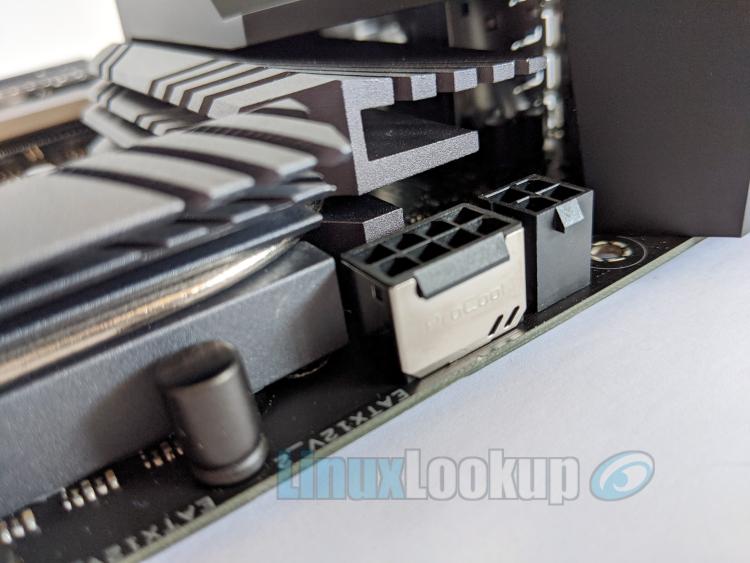ASUS ROG STRIX X570-F GAMING Motherboard Review
The ASUS ROG STRIX X570-F GAMING motherboard is based on the newer AMD X570 chipset for Socket AM4 — a platform which mostly consists of high-end motherboards focused on enabling a variety of future forward technologies such as PCIe 4.0 and M.2 Gen 4 storage along with support for both AMD Ryzen 2nd and 3rd Generation Processors.
This upper-tier motherboard may come with a premium price tag, but certainly makes no compromise when it comes to options, lets review the offerings.
At the time of publication the ASUS ROG STRIX X570-F GAMING Motherboard is available at online retailers for $285.99 USD — reasonably priced in comparison to other competing X570 motherboards.
As always, ASUS includes everything required to get the motherboard installed. Four latching SATA cables (two 90-degree angled and two straight), one extension cable for RGB strips, one extension cable for RGB Addressable strips, M.2 screws package, black cable ties, Thermistor cable (sensor for measuring temperature), installation DVD and users manual.
Also included is a ROG STRIX branded door hanger, along with a ROG STRIX stickers pack for labeling fans, cables or anything else you see fit.
Aesthetics appeal of the ASUS ROG STRIX X570-F GAMING is subtle yet striking, featuring the same monochromatic colour scheme we've seen on past ASUS Motherboards. A black printed circuit board, smoke coloured heatsinks, black expansion slots, black DIMM sockets along with black heatsinks. New is an exclusive rainfall pattern chipset shroud though.
Blackout themes are very popular, but if you're looking to add some colour the newly designed RGB lighting is integrated into the I/O shroud (Logo and STRIX cyber-text), along with two RGB headers and an Aura addressable strip header for illumination.
ASUS Aura allows for full RGB lighting control, nonetheless, support for Linux compatible controller software isn't available. Configuration options are limited to on/off, sleep, hibernate and soft states from within the UEFI.
Connectivity on the back panel is appropriate. Aside from the pre-mounted I/O shield, here you will find a Gigabit LAN port (RJ-45) driven by the Intel I211-AT chipset with Anti-surge LANGuard, four USB 3.2 Gen 1 (blue), three USB 3.2 Gen 2 ports (red) Type A ports and a single USB 3.2 Gen 2 Type-C. High definition audio jacks supporting 2/4/5.1/7.1-channel configurations, along with one optical S/PDIF audio out connector are also present.
The external BIOS FlashBack button allows for flashing without installation of a CPU or entering the BIOS screen, great for recovery or convenience.
Multi-VGA output support via HDMI 2.0b (max. resolution 4096 x 2160 @ 60Hz) and DisplayPort 1.2 (max. resolution 4096 x 2160 @ 60 Hz) is present, but to utilize this feature your AMD CPU must support Integrated Graphics Processor (IGP), otherwise a discrete GPU is required.
Internally there is one USB 3.2 Gen 2 header, plus two USB 3.2 Gen 1 connectors and four USB 2.0 headers for your case front panel.
Onboard are dual M.2 Sockets, each featuring a passive heatsink with thermal pad for improved operating temperature of the storage device. The first M.2 Socket (M.2_1) is located directly above the PCIEx16_1 graphics card slot and you'll need to remove your GPU to get at it.
While the second (M.2_2) is located towards bottom of the board. Both support M Key, Type 2242/2260/2280/22110 storage devices in PCIe 4.0 x4 and SATA modes.
M.2 Socket accessibility on most motherboards has always been a hindrance. The ASUS ROG STRIX X570-F GAMING is no exception. Slight design improvements such as captive screws on each M.2 heatsink eliminate the chance of being misplaced or falling into your case. However, as you can see in the photo above, accessing either M.2 slot requires the complete removal of chipset shroud (along with two screws) as the two of four heatsink screws are tucked underneath the shroud.
Good luck doing this with a case in an upright orientation. By no means a deal breaker, but certainly a pain in the butt if you swap M.2 storage often.
Eight internal Serial ATA 6Gb/s connectors are located towards the bottom corner of the board. These SATA connectors are stacked two high with a 90-degree orientation and offer support for RAID 0, RAID 1, and RAID 10.
SupremeFX 8-Channel High Definition Audio CODEC S1220A is onboard to provide technologies such as dual OP amplifiers, impedance sense for front and rear headphone outputs, 120 dB SNR stereo playback output and 113 dB SNR recording input and 32-Bit/192kHz playback.
Power delivery on the ASUS ROG STRIX X570-F GAMING is a Digi+ VRM with 12+2 power stages and ASP1106G (4+2) controller.
A total of four single-latch DIMM sockets provide support for up to 128GB of DDR4 system memory. According to ASUS, the ROG STRIX X570-F GAMING supports a Memory Frequency of up to 4400MHz (O.C) and I've confirmed this from within Unified Extensible Firmware Interface (UEFI).
While on the topic of UEFI, in typical ASUS fashion the ROG STRIX X570-F GAMING motherboard shares the same UEFI layout present in other current ASUS motherboard models. If you're unfamiliar with the ASUS UEFI, it is absolutely effortless to tweak and configure. For the novice, overclocking and system optimization is a matter of one-click with the tuning utilities. If you're more of an enthusiast, all the comprehensive feature sets and individual values are intuitively presented too.
Multiple GPU configurations are supported for both AMD 3-Way CrossFireX and NVIDIA 2-Way SLI Technology. Expansion slots on the ASUS ROG STRIX X570-F GAMING are two PCIe 4.0 x16 (x16 or dual x8) slots, one PCIe 4.0 x16 (max at x4 mode) slot, and two PCIe 4.0 x1 slots.
Consistent with ASUS is the incorporation of reinforced PCIe expansion slots on their motherboards. This feature is marketed as ASUS SafeSlot — PCIe with enhanced retention and shearing resistance. The stainless steel shielding safeguards against interference and also improves mechanical strength of each slot. Additionally, all three PCIe x16 slots feature Q-Slot clips to aid with insertion and retention of today's increasingly heavy graphics cards.
Linux Compatibility
For the duration of evaluation I have confirmed that the latest stable release of Ubuntu 20.04.1 LTS (Focal Fossa) Desktop successfully installs and operates under default conditions. All on-board feature sets have been tested to function correctly out of the box.
I've also confirmed Linux stability running on both a 2nd Generation AMD Ryzen 5 2600X and 3rd Generation AMD Ryzen 5 3600 CPUs. I strongly suggest you update the motherboard BIOS to the latest release. At the time of this review, BIOS 2606 was current.
Compatibility Test Conditions
- Processor: AMD Ryzen 5 2600X & AMD Ryzen 5 3600
- Memory: 64GB Kit (4 x 16 GB) DDR4
- Distribution: Ubuntu 20.04.1 LTS (64-Bit) Desktop
- Linux Kernel: 5.4.0-42-generic
- OS Install Options: Default
- BIOS Version: 2606
- BIOS Settings: Default
- Usage Tests: Desktop, KVM, VirtualBox, Steam
- Overall Result: Stable
Gallery
Conclusion
The Good - Pros- Premium feature sets you'd expect in an ASUS ROG motherboard
- Digi+ VRM with 12+2 offers best-in-class power delivery
- Abundant PCIe 4.0 performance
- Intel I211-AT Gigabit Ethernet Controller (up to 2.5GbE)
- Removed legacy PS/2 combo port from the rear I/O
- Colour scheme is consistent and modern
- External BIOS Flashback button
- Standard 3 year warranty
- Stable under Linux (Ubuntu 20.04.1 LTS Desktop)
The Bad - Cons
- Accessibility to the M.2 Sockets is labored and requires design improvement
- No Linux compatible Armoury Crate utility or controller software for ASUS Aura
The Ugly - Issues
- N/A
The Verdict - Opinion
The ASUS ROG STRIX X570-F GAMING is well equipped for upgrading to an AMD Ryzen 3rd Generation Processor, offering a compelling balance between premium features and a competitive price point.
